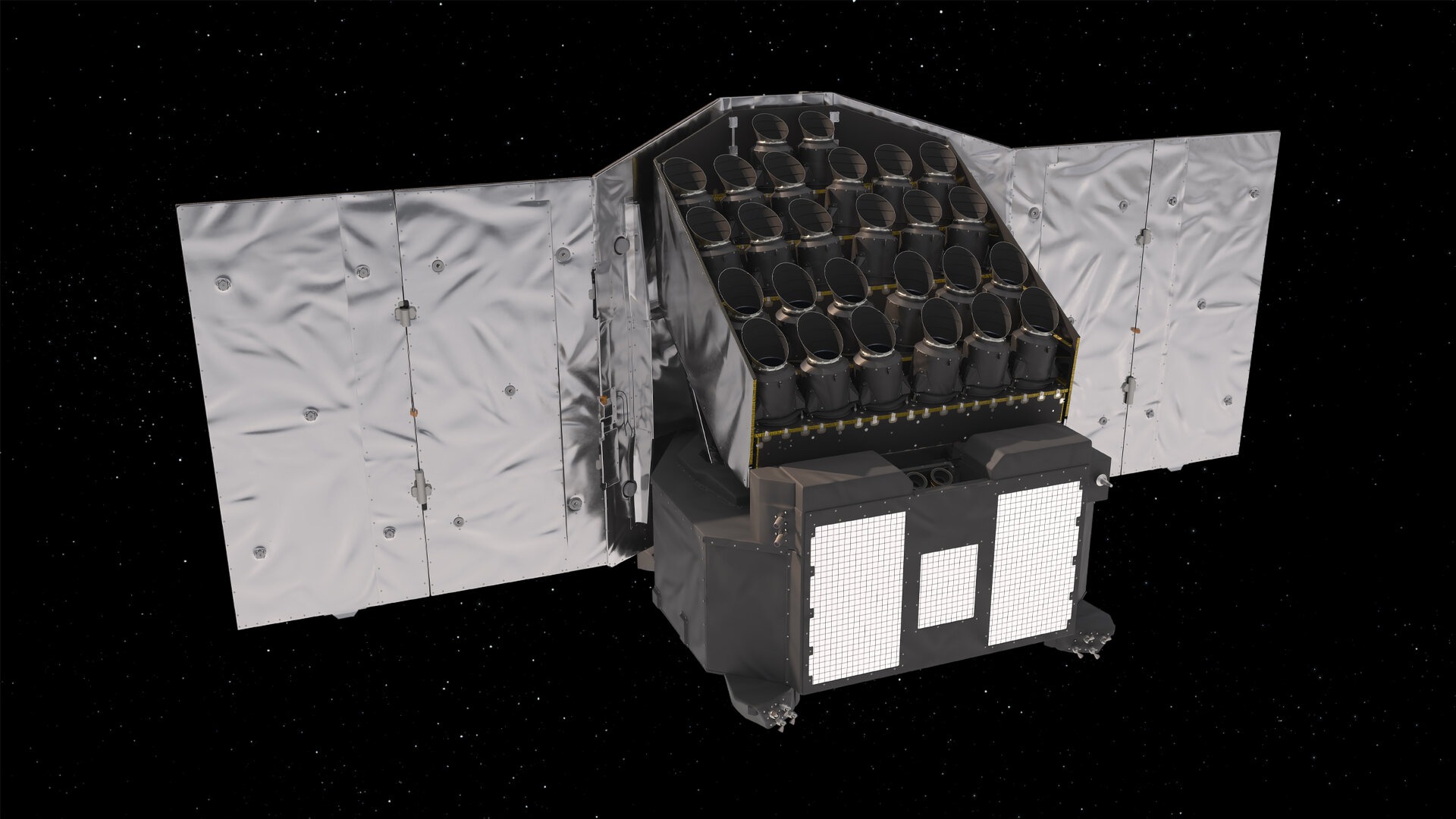Europe’s next planet-hunting spacecraft just spread its “wings” in preparation for launch.
PLATO‘s twin solar panels, which will power the Planetary Transits and Oscillations of Stars spacecraft’s search for Earth-like exoplanets, spread out successfully during engineering tests last month in a European Space Agency (ESA) clean lab.
That’s a big deal, as “PLATO is on track for the final key tests to confirm that it is fit for launch,” ESA officials wrote in a statement Thursday (Oct. 9). If all goes to plan, PLATO will fly to space in December on board an Arianespace Ariane 6 rocket to search for strange new worlds.
The 4-billion-Euro ($4.62-billion USD) mission is being put through its paces in a Netherlands clean room, after engineers bolted together the back of the spacecraft with a module combining the sunshield and solar panels. As the panels collect power to generate electricity, the sunshield will shadow the scientific equipment prone to overheating in the sun’s glare.
Since the panels need to wrap up tight to the spacecraft during launch before spreading in space, engineers tested the panels’ deployment in the lab to make sure all was well. Like wings, the left and the right side were carefully unfurled in separate tests on Sept. 16 and Sept. 22, respectively.
“The deployment test must be carried out as if gravity were absent, and the panels were weightless,” ESA officials wrote. “For this, the panels were suspended from a supporting frame, with a system of pulleys that moved along as the panels smoothly unfolded.”
Engineers then verified the power was working by using a “special lamp to simulate the effect of sunlight.” Next up comes prelaunch testing: shaking and noise-blasting PLATO to simulate the rocket’s liftoff, and then putting the spacecraft in a large chamber to simulate the vacuum of space.

Once PLATO gets through launch and its commissioning tests, next comes a long search for other Earths. It will use 26 cameras to gaze at more than 150,000 bright strs simultaneously, seeking small changes in starlight. The goal is to catch exoplanets slightly dimming their parent stars’ brightness as the little worlds pass across the face of these stars.
“To achieve the necessary high sensitivity, the cameras must be kept cool, so that each camera is kept at its best-focus temperature around -80 degrees Celsius [-112 degrees Fahrenheit],” ESA officials wrote.
PLATO is slated to last at least four years according to a mission website, although the observatory could persist longer with funding and a healthy spacecraft.
